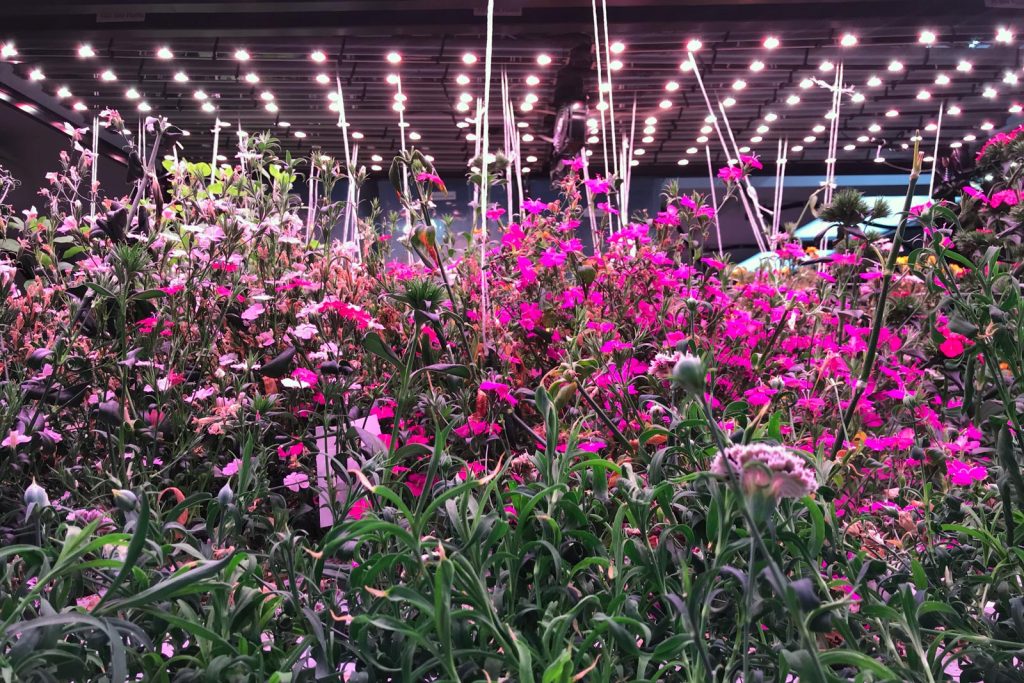TriBeCa’s Hydroponic Wonderland of Herbs and Spices, Farm.One
An urban vertical farm producing rare ingredients for some of NYC’s best restaurants

There’s one window into TriBeCa’s Farm.One, a series of hydroponic vertical gardens producing greens for some of NYC’s best restaurants. That window, however, faces into the building and walking by it gives reason to pause. There, just beyond the glass, is tier upon tier of rolling racks with rare herbs and spices and even edible flowers. There’s no natural light, only the power of regulated LEDs. Several water-based nutrient systems cycle through—moderated by about five of the 11 or so employees at the company. Ultimately, it’s a pesticide-free destination focusing on about 100 ingredients at a time, all of which have unexpectedly pronounced flavors.
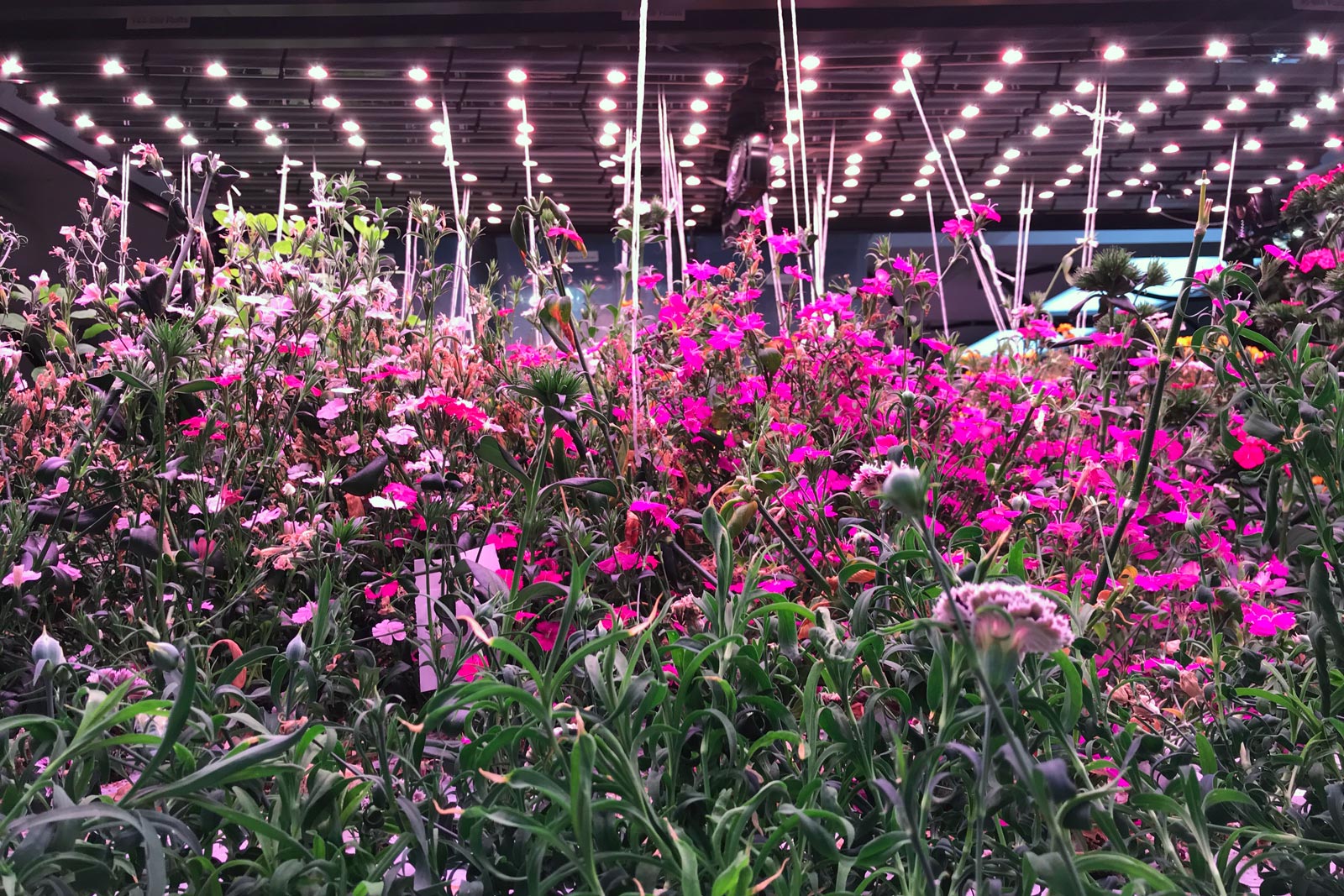
“Pretty much everything here starts from seed,” Robert Laing, the founder and CEO of Farm.One explains to CH. “Though, sometimes we will bring in a cutting from outside,” he adds. Laing’s catalog spans from the obscure to the necessary, including everything from tangerine gem marigolds to nepitella, an herb from Tuscany that delivers an odor of mint and oregano. Both are pungent. “We like to grow things that are small and delicate but have a really powerful impact. They are not just on a plate for appearance. They carry tremendous flavor,” he says. Walking through the racks reveals so much: micro arugula, red Russian kale, green sorrel, Miz America, mint flowers and even blue spice basil. If you haven’t heard of some of these, that’s entirely understandable. Farm.One takes requests from chefs. Some of the most acclaimed establishments, Ai Fiori and Jungsik included, reach out in search of not only specific greens but even shapes and sizes.
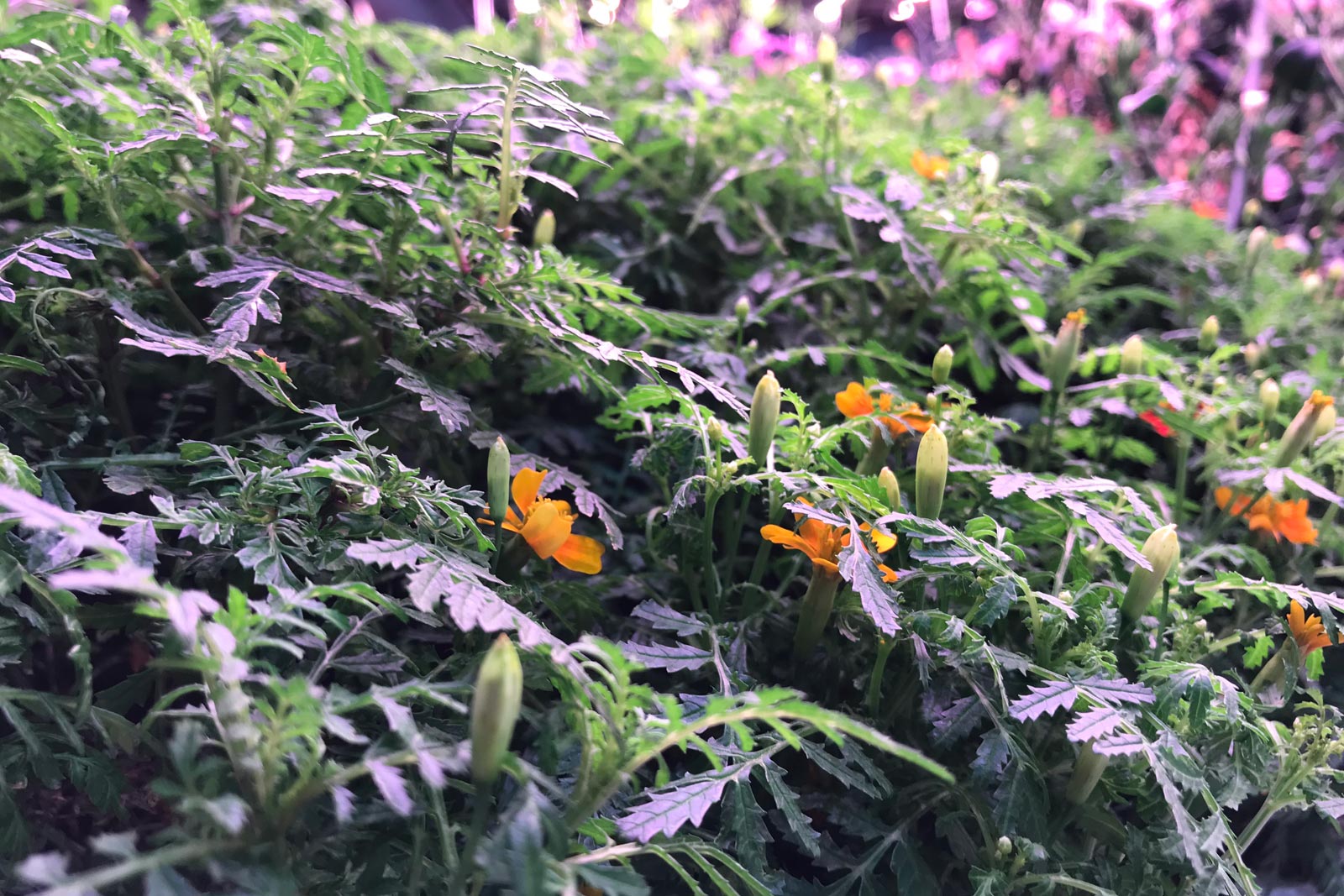
“Chefs tell us exactly what they want. It’s grown to order for their recipes. We even know the leaf size the chef wants so we work backward from that,” Laing explains. “We developed a software to have that in the growing recipe. It guides where the plant batches go in the system.” And while this maximizes space, much of their space and resource has been used for experimentation. “We always try to grow new stuff. A year and a half ago we were growing 20 products. Now we’ve grown close to 600. It becomes this nice library of flavor,” he notes. It’s clearly also a catalog of experience and knowledge.

Touring the garden with Laing, one is quick to observe a few unexpected elements. Some burgeoning plants extends from brown clumps. “That’s coconut husk that’s been recycled and turned into plant plugs,” Laing explains. They also plant into sun treated stone that’s been spun like cotton candy. It’s also a reusable planter. “Everything we use can either be composted or reused. We have a zero waste approach here. It’s the same with our packaging. Chefs either give their packaging back to us, or reuse it.” There are also bugs flitting about. “We control the negative bugs by bringing in populations of other bugs,” he continues. “The most visible are the lady bugs. Those will eat aphids, for instance. Then we’ve got other much smaller ones, hatching in sacks and emerging to eat insects.” One of those is a type of parasitic wasp. While it sounds dramatic, they’re quite tiny and really only tear the insides out of aphids and spider mites.
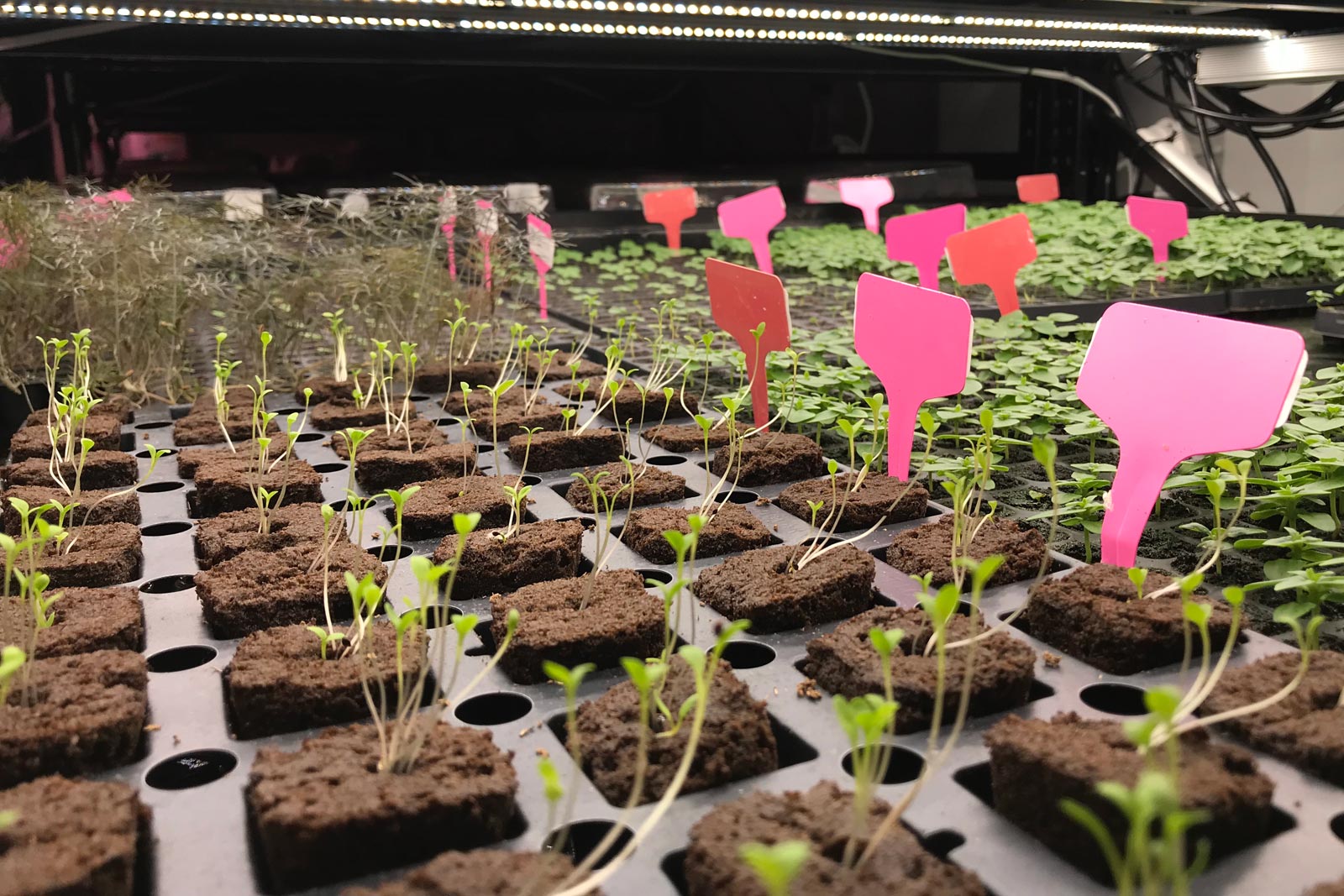
“We do not use any pesticides at all and while that’s great for the people eating them, it’s also great for us working here,” says Laing. This means that anyone can pick absolutely anything off of a plant and it’s ready to eat. As for how they grow and fertilize, “We don’t use chemicals,” he begins. “We used plant-based fertilizers, biodigestive materials and fish waste. There’s some bat poo, too.” This means that the environment is an ecosystem that must be maintained in order for bacteria and beneficial fungi to thrive. Their care must be modified constantly. It’s more than just flipping on the app-controlled fanning system.

Laing says one plant brought him into this business: papalo. He tried some at the farmer’s market in Santa Monica. “I was like, ‘Wow, you can only get this at a certain time in California.’ I starting thinking about how anyone could get it in New York in the middle of winter. it spurred me on this quest.” His interest in hydroponics was countered by a reduction in LED costs. In 2016 Laing opened a small prototype farm inside of NYC’s Institute of Culinary Education. Clients flocked to him. Fundraising brought in an opportunity for expansion and product development. The months-old TriBeCa space marked a materialization of dreams.
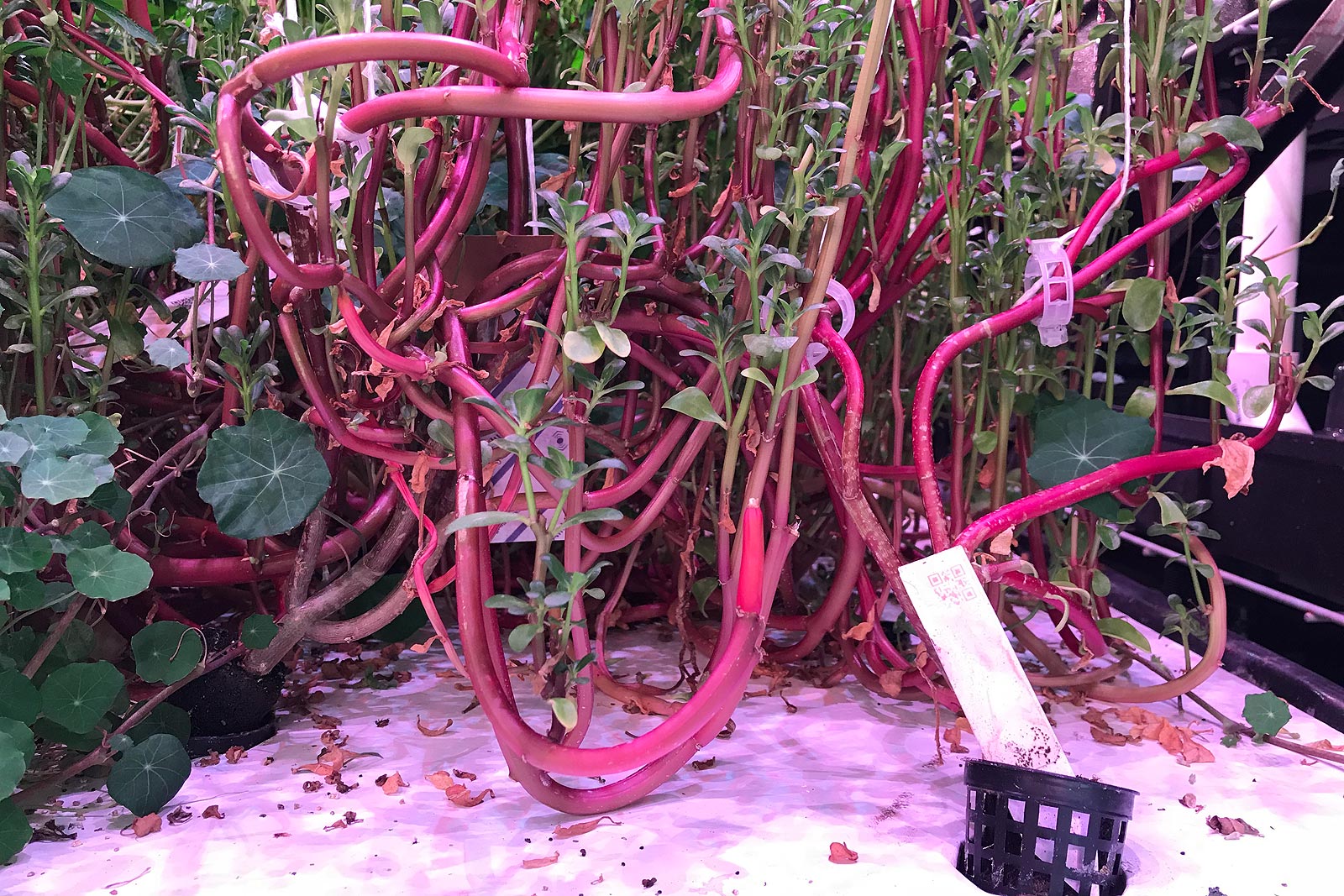
The team at Farm.One delivers to clients every weekday. They do so by bike or subway, without the use of cold storage. This means they can grow varieties of herbs and spices that have a lot of upfront flavor, rather than modified version that need to be hearty for transport and consumption later. Freshness is a result, because everything is harvested and delivered within a couple hours. As Laing concludes, “it’s farm to table to the extreme.” He’s got expansion plans, as well—and not just for high end herbs but for more accessible vegetables in underused urban spaces.

There are a few opportunities to enter. First, there’s a three hour class ($130). Here one learns about hydroponics, LEDs and indoor farming. Second, there’s a 55-minute sensory farm tour ($50) where guests taste dozen of herbs—many of which are likely to be unfamiliar. It comes with a glass of prosecco and ends with a bang (well, an “electric button“). Anyone can also
shop for produce. Farm.One is located at 77 Worth Street, TriBeCa.
Hero image courtesy of Farm.One, all other images by Cool Hunting
